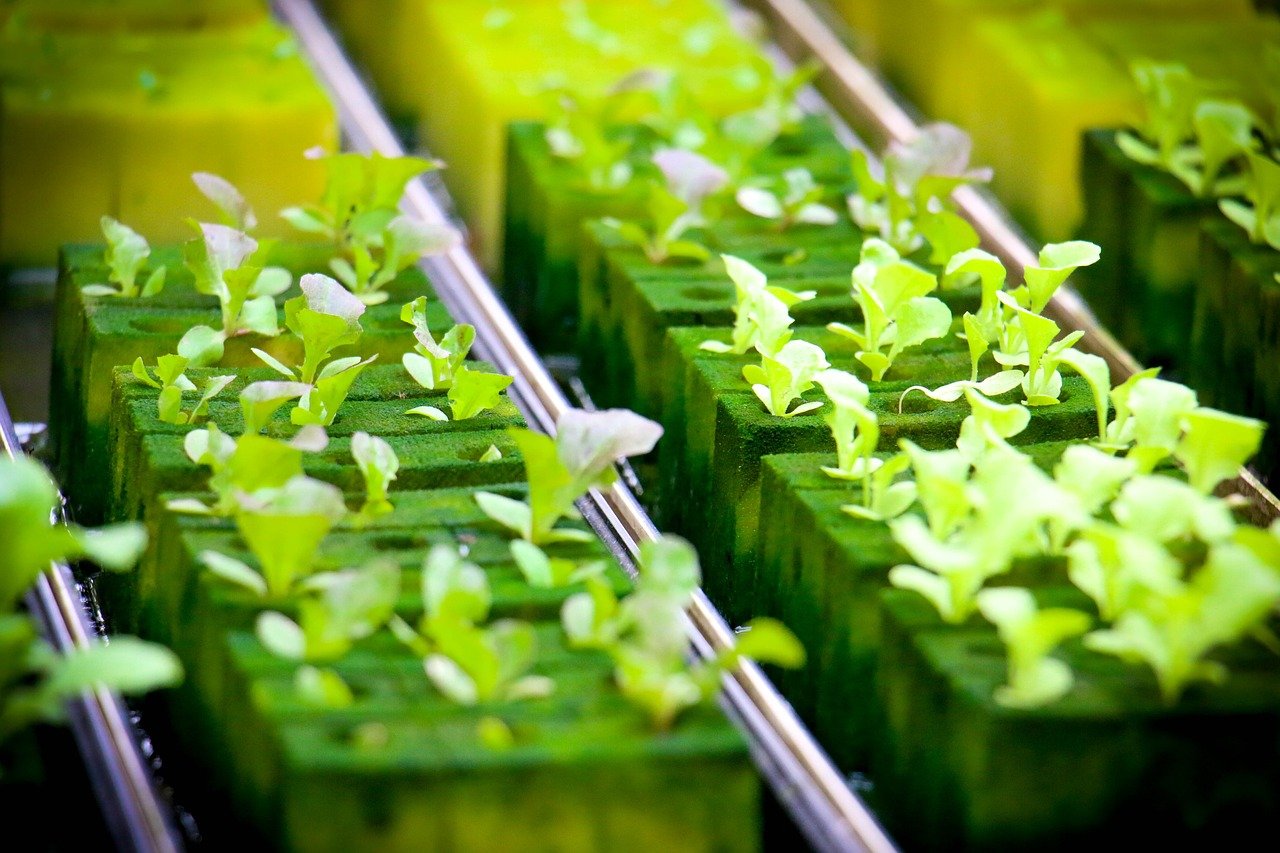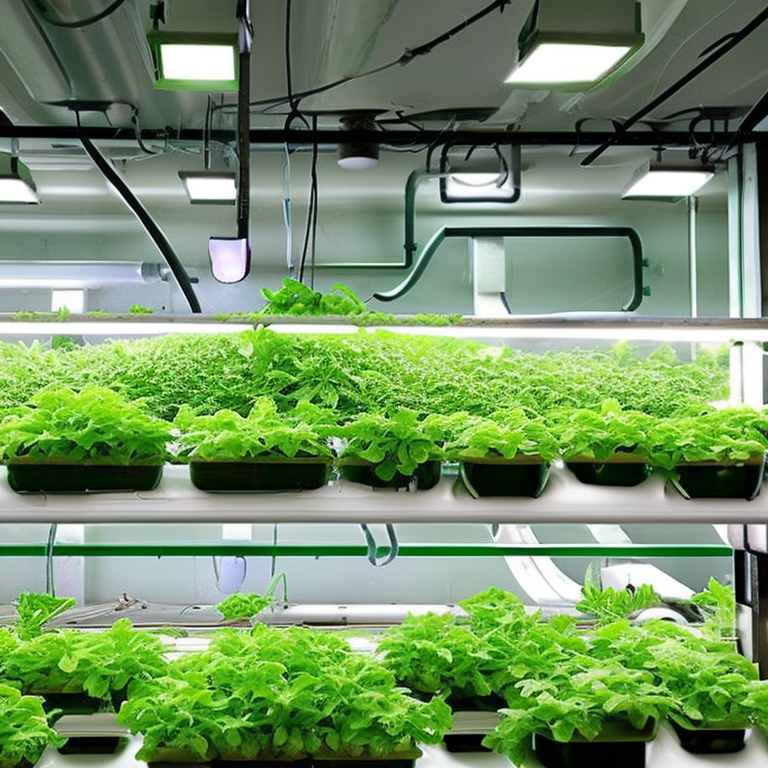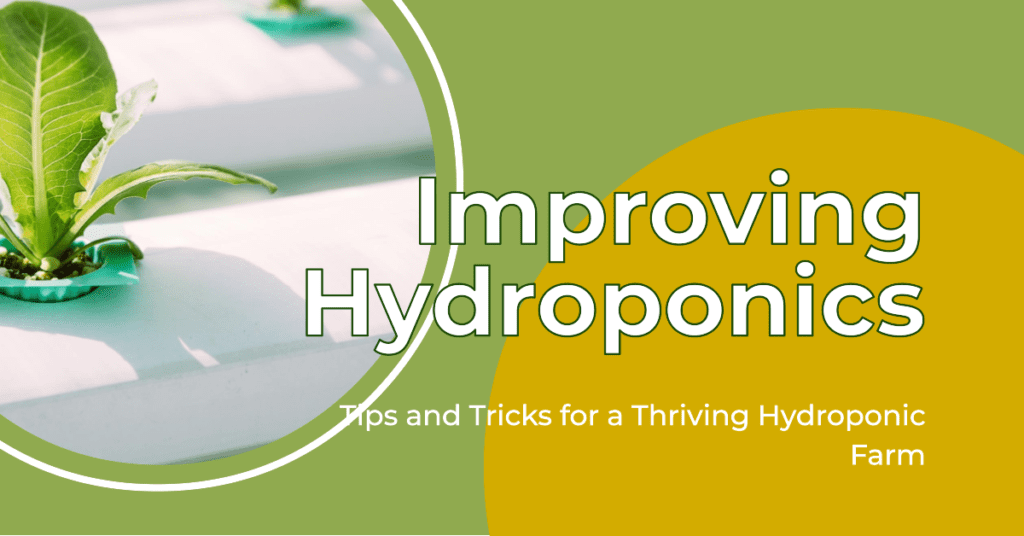How To Improve Hydroponics?
Definition and basic principles
Hydroponics, in simple terms, is a method of growing plants without soil. Instead of traditional soil-based farming, hydroponics utilizes nutrient-rich water solutions to deliver essential elements directly to the plant roots.
This revolutionary approach relies on the understanding that plants primarily need water, nutrients, light, and oxygen to grow. By providing these elements in a controlled environment, hydroponic gardeners can optimize plant growth and maximize yields.
The basic principles of hydroponics involve creating an artificial root environment where plants are supported either by an inert growing medium like perlite or coco coir, or through direct exposure of their roots to the nutrient solution. The nutrient solution is carefully formulated to provide all the necessary elements required for healthy plant growth.
Benefits of hydroponic gardening
One of the primary advantages of hydroponic gardening is its ability to conserve water compared to traditional soil cultivation methods. In hydroponics, water is recirculated within a closed system rather than being wasted through evaporation or runoff. This makes it an environmentally friendly choice for those looking to minimize water usage while still enjoying fresh homegrown produce.
Furthermore, since plants grown hydroponically receive precise amounts of nutrients directly at their roots, they are not limited by poor soil quality or inadequate nutrient availability. This allows for faster growth rates and higher crop yields throughout the year.
Hydroponic systems also offer greater control over environmental factors such as temperature and light intensity. Indoor setups equipped with advanced technologies like LED grow lights enable gardeners to cultivate crops year-round regardless of external weather conditions.
Additionally, being able to fine-tune these factors allows for optimum plant growth and increased production efficiency. Another notable benefit is the reduced risk of pests and diseases commonly associated with traditional soil-based gardening.
Since there is no soil involved, hydroponic systems are naturally less susceptible to soil-borne pathogens and weeds. This minimizes the need for harmful pesticides, making hydroponics a healthier and more sustainable choice.
Hydroponics offers a promising alternative to conventional agriculture by harnessing the power of water-based cultivation. By understanding the basic principles and leveraging the benefits it provides, gardeners can enjoy consistent crop yields, conserve resources, and minimize environmental impact.

Understanding the Challenges in Hydroponics
Maintaining Proper Nutrient Balance
When it comes to hydroponic gardening, one of the key challenges lies in maintaining the perfect nutrient balance for your plants. Unlike traditional soil-based gardening, where nutrients naturally occur in the soil, hydroponics requires us to provide these essential elements directly to the roots. It’s crucial to understand that different plants have varying nutrient requirements.
For instance, leafy greens like lettuce and spinach have higher nitrogen needs compared to fruiting plants like tomatoes or peppers. To maintain proper nutrient balance, it is important to regularly check the composition of your nutrient solution and adjust its concentration accordingly.
Managing pH Levels Effectively
Another challenge faced by hydroponic gardeners is maintaining optimal pH levels for plant growth. pH refers to the acidity or alkalinity of your water and nutrient solution. Most plants thrive within a slightly acidic range between 5.5 and 6.5 pH.
Fluctuations in pH can hinder nutrient uptake by plants, leading to deficiencies or toxicities even when nutrients are present in sufficient quantities. To manage pH effectively, you can use a digital pH meter or test kit to monitor levels regularly and make adjustments as needed using products specifically designed for hydroponic systems.
Preventing Diseases and Pests in a Controlled Environment
In a controlled environment like a hydroponic system, diseases and pests can quickly become problematic if not properly managed. With no natural predators or filters provided by soil microorganisms, any disease or pest issue can spread rapidly among your cherished plants. The absence of soil also means that plants aren’t able to develop strong natural defenses against pests and pathogens as they would outdoors.
Implementing preventive measures is critical for maintaining a healthy environment for your hydroponic garden. One effective approach is regular monitoring of the plants for any signs of disease or pests.
Early detection can enable targeted interventions, such as removing infected plants or introducing beneficial insects like ladybugs to control harmful pests naturally. Additionally, maintaining strict cleanliness and hygiene within the system by sterilizing equipment and employing proper sanitation practices can go a long way in preventing the spread of diseases.
Remember, hydroponic gardening is all about creating an optimal environment that promotes healthy plant growth. By understanding and addressing these challenges, you’ll be able to enjoy bountiful harvests in your hydroponic setup!
Enhancing Nutrient Management in Hydroponics
Choosing the right nutrient solution for specific plants
When it comes to hydroponic gardening, one of the critical factors for success lies in choosing the appropriate nutrient solution for your plants. Different plants have varying nutritional requirements, and it’s essential to provide them with the proper balance of nutrients to support healthy growth. Researching and understanding the specific needs of each plant you intend to cultivate is a crucial step in this process.
Consider factors such as the required macro and micronutrients, as well as any specific growth stages that may necessitate adjustments in nutrient levels. For example, leafy greens like lettuce and spinach require higher nitrogen levels for vigorous leaf development, whereas fruiting crops like tomatoes and peppers thrive on nutrient solutions with increased phosphorus and potassium content to promote flower formation and fruit production.
Macronutrients And Micronutrients Requirements
Macronutrients are essential elements that plants need in large quantities. These include nitrogen (N), phosphorus (P), potassium (K), calcium (Ca), magnesium (Mg), and sulfur (S).
Each of these macronutrients plays a vital role in various plant functions such as photosynthesis, root development, energy transfer, and overall plant structure. In addition to macronutrients, plants also require a range of micronutrients or trace elements.
These include iron (Fe), manganese (Mn), zinc (Zn), copper (Cu), boron (B), molybdenum (Mo), and chlorine(Cl). Although needed only in small amounts by plants, these micronutrients are just as crucial for their optimal growth.
Understanding both macro- and micronutrient requirements is key to achieving healthy plant growth. It is worth noting that maintaining an appropriate balance among these nutrients is essential; excessive or inadequate amounts can lead to nutrient deficiencies or toxicities, negatively impacting plant health.
Organic vs Synthetic Nutrients Debate
The choice between organic and synthetic nutrients is a topic that often sparks debate among hydroponic enthusiasts. Organic nutrients are derived from natural sources, such as compost, manure, or fish emulsion. On the other hand, synthetic nutrients are chemically formulated to provide the necessary elements for plant growth.
While both options have their merits, it ultimately comes down to individual preferences and goals. Organic nutrients are considered more sustainable and environmentally friendly since they rely on natural resources.
They improve soil health in traditional gardening systems but require additional considerations in hydroponic setups. Synthetic nutrients, on the other hand, offer more precise control over nutrient composition and availability.
This can be advantageous when targeting specific growth stages or addressing specific deficiencies effectively. However, some argue that these chemical formulations might lack certain trace elements or beneficial microbial activity found in organic alternatives.
Ultimately, the decision between organic and synthetic nutrients depends on factors such as personal philosophy, availability of resources, and desired outcomes. Both approaches have their advantages and disadvantages; finding a balance that works best for your hydroponic system is key.
By carefully selecting nutrient solutions based on plant-specific requirements and understanding the importance of macronutrients versus micronutrients as well as considering the organic vs synthetic debate when making choices, you can enhance nutrient management in your hydroponics system significantly. This approach will ensure optimal nutrition for your plants throughout their growth cycle while maximizing yield potential and promoting healthy development overall.
Optimizing pH Levels in Hydroponics
Importance Of Maintaining pH Balance
In the world of hydroponics, maintaining the proper pH balance is crucial for the success of your plants. pH, which stands for “potential of hydrogen,” measures the acidity or alkalinity of a solution.
In hydroponic systems, this refers to the acidity or alkalinity of your nutrient solution. It’s important to remember that different plants have specific pH preferences, so it’s essential to adjust the pH accordingly.
Impact On Nutrient Absorption By Plants
The pH level directly affects how efficiently your plants can absorb nutrients. When the pH is imbalanced, it can hinder nutrient uptake and lead to deficiencies or toxicities.
For example, if the nutrient solution is too acidic (low pH), certain nutrients like calcium and magnesium become less accessible to plants. On the other hand, if it’s too alkaline (high pH), nutrients like iron and zinc may become unavailable.
To optimize nutrient absorption in hydroponics, you must ensure that your plant’s root zone remains within its preferred pH range. This range varies depending on the plant species but typically falls between 5.5 and 6.5 for most commonly grown crops.
Common Issues Caused By Imbalanced pH Levels
When the pH levels in your hydroponic system go haywire, several problems can arise. One common issue caused by an imbalanced pH is nutrient lockout. Nutrient lockout occurs when certain essential elements become insoluble due to extreme acidity or alkalinity, rendering them unavailable for plant uptake.
If you notice stunted growth, yellowing leaves (chlorosis), or brown spots on your plants’ foliage despite providing adequate nutrients, it might be an indicator of an imbalanced pH. Other symptoms include nutrient deficiencies or toxicities, as some nutrients require specific pH levels to remain soluble and accessible to plants.
By closely monitoring and adjusting the pH in your hydroponic system, you can avoid these detrimental effects and ensure optimal nutrient uptake by your plants. Maintaining a balanced pH not only enhances plant growth but also strengthens their overall health, leading to bountiful harvests.
Implementing Disease and Pest Control Measures
When it comes to hydroponic gardening, one of the key challenges is preventing and managing diseases and pests. In a controlled environment, plants are vulnerable to specific ailments that can spread quickly if left unchecked. Implementing effective disease and pest control measures is crucial for maintaining healthy plants and maximizing yields.
Identifying common diseases in hydroponic systems
In hydroponics, several diseases can pose a threat to your plants. One such disease is root rot, caused by excessive moisture in the growing medium leading to oxygen deprivation for the roots.
Another common problem is powdery mildew, a fungal infection that appears as white powdery patches on leaves and stems. Additionally, damping-off can be problematic in young seedlings, causing them to rot at the base before they even have a chance to grow.
Preventive measures for disease control
To prevent diseases from taking hold in your hydroponic system, there are several proactive steps you can take. First and foremost, improving air circulation and ventilation is essential. Good airflow helps maintain optimal humidity levels while preventing stagnant air which encourages the growth of mold and fungus.
Improving air circulation:
To improve air circulation within your garden area or grow tent, consider using oscillating fans positioned strategically to create gentle airflow around your plants. This will help prevent excess moisture buildup on leaves and inhibit fungal growth.
Sterilizing equipment and growing medium:
Cleaning your equipment regularly is another vital preventive measure. Sterilize tools such as scissors or pruning shears between uses with rubbing alcohol or a bleach solution (1 part bleach to 10 parts water).
Additionally, before starting a new growing cycle, it’s crucial to sterilize the growing medium thoroughly. This can be achieved by baking the medium in an oven at 180°F (82°C) for 30 minutes or using specific sterilization products available in gardening stores.

Improving Water Quality for Hydroponics Systems
Importance of water quality
In hydroponic systems, water quality plays a crucial role in the overall success of your plants. Since the plants rely entirely on the nutrient-rich water solution for their growth, any impurities or imbalances in the water can negatively impact their health.
Poor water quality can hinder nutrient uptake, leading to stunted growth, nutrient deficiencies, and even plant death. Therefore, ensuring optimal water quality is vital for achieving thriving hydroponic gardens.
Impact on plant growth and nutrient uptake
Water quality directly affects plant growth and nutrient uptake in hydroponics. High levels of contaminants like chlorine or heavy metals can be detrimental to plants as they may inhibit nutrient absorption.
Additionally, imbalanced pH levels or excess salts in the water can cause stress to the plants’ roots and disrupt their ability to absorb nutrients efficiently. On the other hand, maintaining proper water quality with adequate nutrients and balanced pH levels promotes healthy root development and maximizes nutrient absorption, leading to vigorous plant growth.
Water treatment options
To improve water quality for hydroponic systems, various treatment options are available. The choice of treatment method depends on factors such as the initial level of impurities and contaminants present in the source water.
Reverse osmosis
One effective method commonly used is reverse osmosis (RO). It involves passing source water through a semi-permeable membrane under pressure to remove impurities, including minerals and dissolved solids. RO filters out up to 99% of contaminants from the input water, providing a clean base that allows precise control over nutrient composition during mixing with fertilizers.
Ultraviolet sterilization
Another useful technique is ultraviolet (UV) sterilization. UV light exposure kills or inactivates bacteria, viruses, and other pathogens present in the water. It is a chemical-free and environmentally friendly method that ensures the water used in hydroponics is free from harmful microorganisms.
UV sterilization can be used as a standalone treatment or in combination with other filtration methods to enhance water quality. By implementing these water treatment options like reverse osmosis and ultraviolet sterilization, you can significantly enhance the quality of water used in hydroponic systems.
This will provide your plants with clean, nutrient-rich water that optimizes their growth potential and minimizes the risk of diseases caused by contaminated water. Remember, ensuring proper water quality is one of the key steps towards maximizing the success of your hydroponic garden.
Advancements in Hydroponic Technologies
Aeroponics: High-tech cultivation method
Aeroponics, my friends, is the crème de la crème of hydroponic technologies! While traditional hydroponics systems submerge the plant roots in a nutrient-rich solution, aeroponics takes things to a whole new level.
In this cutting-edge cultivation method, plants are suspended in a chamber where their roots are constantly misted with a nutrient solution. This allows for maximum oxygenation and nutrient uptake directly to the root zone.
The benefits of aeroponics are truly remarkable. Since the roots are exposed to air rather than being submerged, there is zero risk of oxygen depletion.
This not only prevents root diseases but also stimulates faster growth and higher yields. Additionally, since there are no solid growing media required, maintenance becomes a breeze as you eliminate the need for replacing or sterilizing soil or other medium.

Vertical farming: Utilizing limited space efficiently
Ah, vertical farming – the answer to all urban gardeners’ prayers! With our cities expanding rapidly and available land shrinking by the day, it’s time we thought outside the box (or rather inside it) and embrace vertical farming.
Imagine growing your favorite plants on towering racks that take up minimal floor space while maximizing production – sounds like something out of a sci-fi movie, right? Well folks, it’s very much real!
Vertical farming involves stacking multiple layers vertically using specialized structures that provide optimal lighting conditions for each level. By cleverly utilizing artificial light sources such as LEDs and optimizing environmental factors like humidity and temperature control, you can grow an abundance of crops all year round in limited areas.
But wait – there’s more! Vertical farming not only saves space but also conserves water by implementing efficient irrigation techniques like drip irrigation or even aeroponic misting.
This means you can kiss those worries about water scarcity and excessive usage goodbye! With vertical farming, you can fully harness the potential of hydroponics in even the tiniest of spaces.
So, my dear readers, as we conclude this enthralling discussion on advancements in hydroponic technologies, I hope you’ve come to appreciate the wonders of aeroponics and vertical farming. These remarkable methods revolutionize how we cultivate plants by embracing innovation and efficiency.
Whether you’re a hobbyist gardener or a commercial farmer, incorporating these techniques will undoubtedly take your hydroponic game to new heights. Embrace the future of agriculture – it’s right at your fingertips!
How Can I Enhance My Hydroponic System Using the Best Growing Medium?
The best hydroponic growing medium plays a crucial role in enhancing your hydroponic system. It provides essential support and nutrients to your plants’ roots, ensuring healthy growth and maximum yields. Choosing the right growing medium, such as coco coir or hydroton, can make a significant difference in your overall hydroponic setup.
Fine-tuning Environmental Factors
Light intensity, duration, and spectrum
When it comes to hydroponics, one of the key factors that can significantly impact plant growth is light. Not only does it provide energy for photosynthesis, but different aspects of light such as intensity, duration, and spectrum can also influence plant development. Light intensity refers to the brightness of the light source, while duration refers to the number of hours a plant is exposed to light each day.
Additionally, the spectrum refers to the range of wavelengths emitted by a light source. By fine-tuning these environmental factors in your hydroponic setup, you can optimize your plants’ growth and productivity.
LED vs traditional lighting
In recent years, Light-Emitting Diode (LED) lighting has gained popularity among hydroponic enthusiasts due to its numerous advantages over traditional lighting options like High-Pressure Sodium (HPS) or Metal Halide (MH) lamps. LED lights are highly energy-efficient and emit specific wavelengths that are optimal for photosynthesis. They produce less heat compared to traditional lighting systems, reducing the risk of heat-related damage to plants.
LED lights also have a longer lifespan and can be tailored to provide specific spectrums suitable for different stages of plant growth. While traditional lighting systems may still be used in certain circumstances or setups, LED lights offer greater control and superior results in most hydroponic applications.
Conclusion
Fine-tuning environmental factors such as light intensity, duration, and spectrum plays a crucial role in improving hydroponics. By understanding how these variables affect plant growth and utilizing technologies like LED lighting over traditional options, you can create an ideal growing environment for your hydroponic system.
Remember that each plant variety has specific requirements regarding these factors; hence it’s important to research and adjust accordingly. With careful consideration and experimentation, you can achieve impressive results in your hydroponic garden.
Embrace the exciting possibilities that hydroponics offer and embark on a journey of innovation, sustainability, and bountiful harvests. Happy growing!

